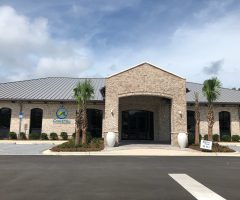The Benefits of Mohs Micrographic Surgery
The founder and originator of Mohs micrographic surgery, Frederic E. Mohs, M.D. (1910-2002), established a specialized technique of surgical skin cancer removal that has revolutionized the modern day treatment of skin cancer. Mohs Micrographic Surgery allows for optimal cancer cure rates, maximal preservation of all of the normal skin, faster healing, and optimal cosmetic and functional outcomes.
As stated in a recent article published in The Skin Cancer Foundation Journal, Mohs surgery is on the rise, for good reasons: It has the lowest recurrence rates, highest cure rates and best cosmetic results of any skin cancer treatment.
Only Fellowship-Trained Mohs Surgery is offered at Coastal Skin Surgery & Dermatology along the Emerald Coast. David Adams, M.D., FACMS is one of the region’s leading Fellowship-Trained Mohs Surgeons and has performed over 15,000 Mohs procedures in private practice.
Dr. David Adams specializes in the Mohs procedure and advanced facial reconstructive surgery. He has experience with numerous types of nonmelanoma skin cancer, including rare tumor types and complex locations.
Non-melanoma skin cancer generally refers to Basal Cell Carcinoma and Squamous Cell Carcinoma. Non-melanoma skin cancer is the most common type of cancer, and is felt to be largely caused by over-exposure to the sun’s ultra-violet rays. Non-melanoma skin cancer can be easily treated, especially when identified and diagnosed early.
Although a single procedure may take several hours, the Mohs process examines 100 percent of the tissue margins under the microscope. Only 1 percent of the tissue margins are examined microscopically in traditional surgical excision. With the preservation of all of the normal skin and a cure rate over 98 percent, Mohs Micrographic Surgery continues to be a front-line treatment for nonmelanoma skin cancers.
The images below depict the preoperative, postoperative, and long-term outcomes of a patient treated by Fellowship-Trained Mohs Surgeon, Dr. David Adams.

